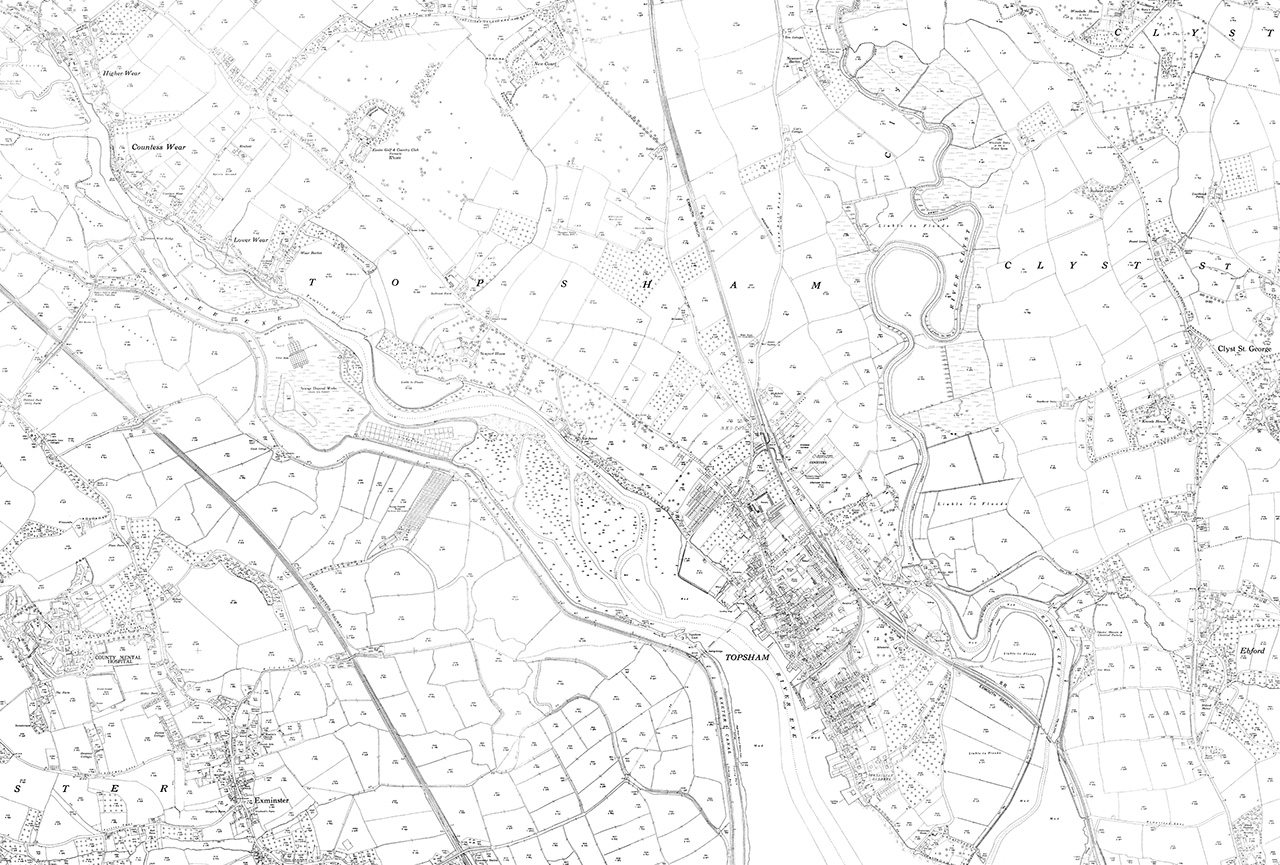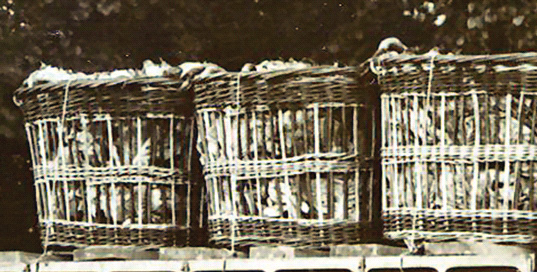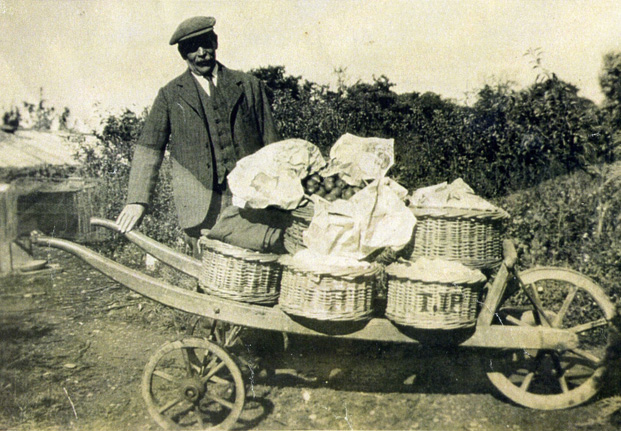
Fetching and Carrying
Baskets were used by market gardeners whenever strong, rigid containers were needed for planting, harvesting, carrying or selling produce. There were professional basket makers in Topsham during the nineteenth century, but it was common for other workers to make baskets as a sideline in the dark days of winter.
Willow maunds
Large, deep willow baskets were called ‘maunds’ or ‘mawns’, and this local word dates from around 1500. Maunds were designed to hold heavy and bulky crops. They were strong but light, with a few bands of ‘fitching’ holding the uprights apart. With the addition of cloth bands, they could be carried on workers’ backs in the fields


WH Edds with half-bushel baskets
Bushel baskets
Bushel baskets were used to transport produce to market. They held an exact measure of fruit or vegetables (one bushel was equivalent to 36 litres) and usefully, they could be stacked. They were made of peeled or unpeeled willow shoots (withies), and sometimes had initials or names stencilled on them for identification. Similar smaller baskets (half-bushels, pecks, half-pecks and sieves) were also used.
Before plastic was introduced in the mid-twentieth century, baskets like these were an everyday sight, but almost none have survived. Today, just a few specialist craftsmen know how to make them.